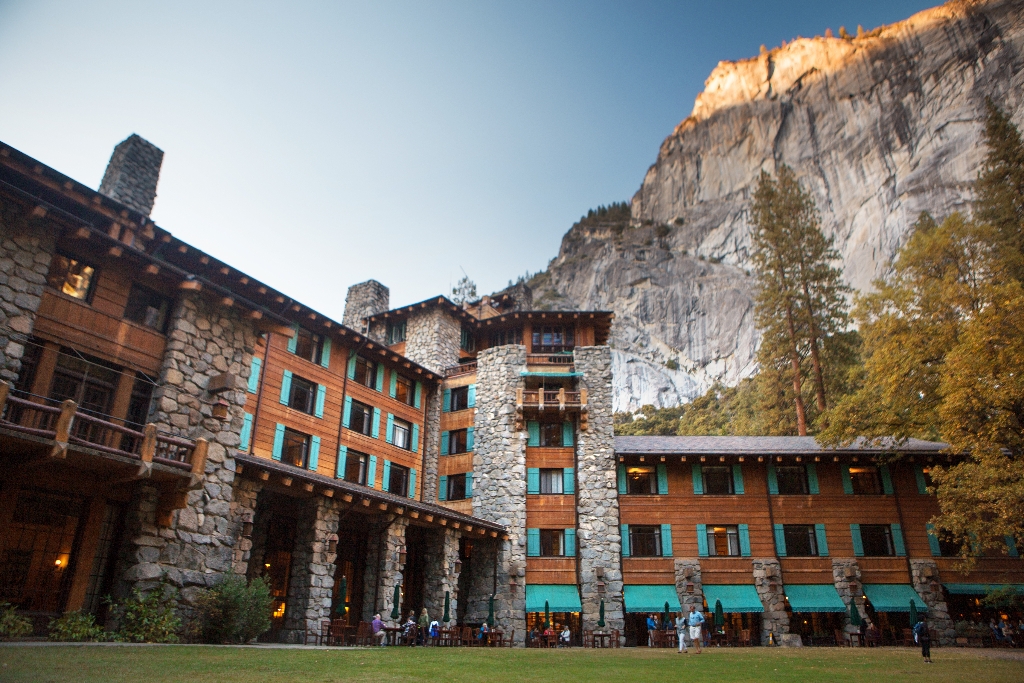
| Designed by Gilbert Stanley Underwood, the Ahwahnee opened in 1927. As an experiment in construction methods, it was built with relatively fireproof materials. Instead of wood, concrete and granite was textured and stained to resemble redwood. The stately building combines rustic and art deco influences. The massing of a central tower and two wings, forming a “Y” shape, is unusual compared to other rustic-era park lodges. The vertical granite buttresses, piers, and chimneys reflect the granite cliffs of Yosemite Valley. In the original design, visitors would enter through the modern-day bar area. Shortly before the opening date, staff noticed that this entrance caused vehicle fumes to fill the hotel. Instead, contractors quickly constructed the covered walkway and porte-cochere entrance in use today. Drs. Phyllis Ackerman and Arthur Pope, renowned art historians, decorated the interior primarily with a bold array of American Indian art of the day. Ansel Adams aptly described the decor as a “miracle of color and design.” The Ahwahnee dining room represents a particularly grand example of rustic influences, with its massive ceilings and opulent but organic details. To preserve the building’s rich heritage, many recent projects have restored existing features and improved building safety to modern standards. |
Is there something we missed for this itinerary?
Itineraries across USA


















































